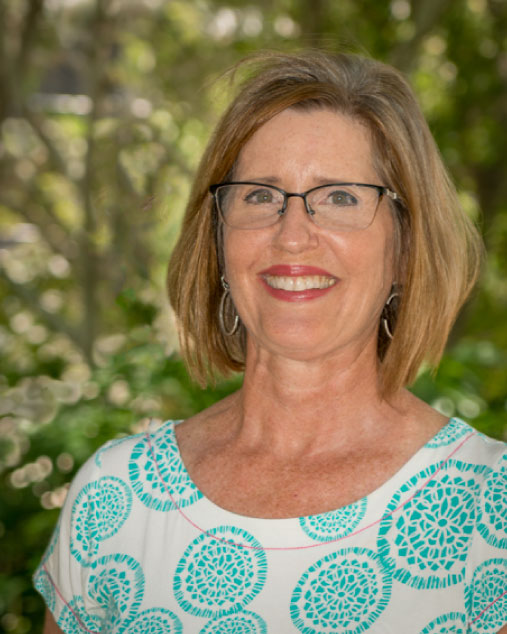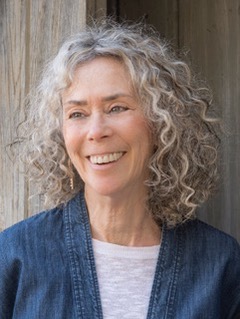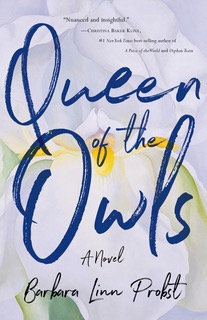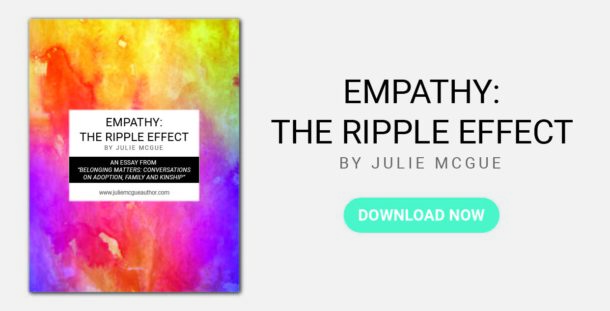A Mom

Julie McGue
Author

Barbara Linn Probst
Author


Conversation Matters is the theme for National Adoption Month. Each Wednesday during November, I showcase different voices from the adoption community. These essays create a deeper awareness and understanding about the adoption experience.
This week, award-winning author, Barbara Linn Probst shares about her unique perspective and experiences as an adoptive mother.
A Mom
There’s a well-known poem called A Legacy of Two Mothers about two forms of love that a mother can have for her child. The poem is embraced by some in the adoption community as a beautiful representation of unselfish love, and rejected by others as a sentimental—and offensive—dismissal of their own not-so-beautiful experience. The divergence of opinion doesn’t surprise me. As a mother by adoption and a clinical social worker by training, I’m sensitive to the range of perspectives, perceptions, and reactions that the notion of two different-but-equally-important mothers can evoke.
The Symbol of Adoption below is meant to depict the interlocking bonds of love among the three people who form the adoption triangle: birth mother, adoptive mother, and child. It is, obviously, an idealized representation—the triangle is equilateral, the heart is symmetrical, and there are no frayed or jagged edges.

In real life, it’s not so simple. A birth mother can feel minimized or excluded, overshadowed by the woman who’s been part of her child’s life in all the ways she couldn’t be—the one who tucked the child in at night, witnessed his first steps, received those handmade Mother’s Day cards sticky with glitter and glue. The adoptive mother, in turn, can feel as if she’s not a “real” mother, no matter what she does—forever threatened by the woman whose unique biological connection to her child is something she can never have, fearful that their bond will always be shallow in comparison. And the adopted child can feel impossibly torn, jealous of her friends whose loyalty seems so much easier, and resentful of both mothers.
The more “open” the adoption—that is, the more the birth and adoptive parents know each other, rather than keeping their identities masked—the more these feelings are likely to rise to the surface and be voiced. Hard as that can be, I think it’s a good thing. And it is hard. Trust me. I’ve been there.
With my son’s adoption, everything was relatively simple. His birth mother didn’t want to meet me, nor did she want any contact with the child; luckily for all, my son was equally uninterested. The only questions he’s ever had, even when we pushed him a bit, were about possible medical conditions.
With my daughter’s adoption, everything was much more complex. My husband and I not only met her birth mother—whom I’ll call Carrie—but we also met her sister, mother, stepfather, and a host of girlfriends who came to the hospital to meet the baby. When Carrie asked if she might have a photo and a letter each year, I was happy to agree. Partly, I was more relaxed, since this was my second time. And partly, it was because Carrie was so open and easy to be with. If anything, I felt like her mother—not an outlandish idea, since I was the same age as her mother, who was far less happy about the adoption than Carrie was, muttering that her daughter was “giving away my grandbaby.”
As it happened, and unlike her brother, my daughter—whom I’ll call Lisa—was always very curious about her biological family. Eventually, when she was sixteen, we put her on a plane to meet Carrie, who was married by then (not to Lisa’s birth father) and expecting a child. I suppose it was an act of faith, but it never occurred to me that Lisa wouldn’t come home at the end of the trip or that Carrie wouldn’t let her. I trusted Carrie, just as she had trusted me.
It wasn’t always the idyllic image depicted in that intertwined triangle-and-heart, of course. At times I felt threatened, defensive, an imposter instead of a “real” mother. Sometimes I over-explained; at other times, when people in my “mommy and me” group went on and on about their labor and breastfeeding, I tried to mask my anger and shame.
And yet I found myself capable of an openness and acceptance that I hadn’t thought possible. When Lisa was about to celebrate her eighteenth birthday, I invited everyone to join us—Carrie, her husband, and their little boy, Lisa’s half-brother. They could afford the plane fare but not a hotel, so I invited them to stay in our guest room, and they did. It felt easy to be generous; after all, I was the hostess, the one who was inviting “them” to take part in “our” family celebration.
It wasn’t until Lisa’s graduation, several years later, that my confidence was tested.
We all met on the campus—Carrie and her family, my husband and me—and sat together during the ceremony. When it was over, we went to find Lisa, who wanted to introduce us to her friends. Suddenly, my daughter was faced with a dilemma. “Wait,” she said. “What am I supposed to call you, when I introduce you? My two moms?”
My first instinct was to feel hurt. We weren’t two moms, equally entitled to the same label. Carrie and her family were here because I had invited them! I wanted to snap at all of them and claim, once again, my rightful place as the hostess. The gracious, benevolent one. The real parent.
Before I could react, Carrie linked her arm through mine and let out a big laugh. “Sure! We can just pretend we’re a lesbian couple.”
It was one of those crystalline moments. I had a choice, but no time for analysis. I had to respond at once, from my heart. And I did.
I joined in Carrie’s laughter. “Great idea!” She and I strode ahead, arm in arm. Lisa rolled her eyes.
In fact, it never came up. Lisa introduced all of us with a generic wave of her hand and said, “I’ll catch up with you guys for dinner, okay?” She wanted to be with her friends. Carrie and I were left with our husbands, and each other. And I was left with a gift.
What I realized, that moment on the graduation field, was that it didn’t matter if I was one-of-two-moms because I was part of a lesbian couple, or one-of-two-moms because I was part of an adoption triangle.
I didn’t even have to be the only mom. After all, I’m not twice as mom-ish because I have two children—so why would I be half as mom-ish because I share the label with someone else?
I’m a mom. Period.
I’ll never know what Carrie’s experience really was—from the inside—or Lisa’s. Yet I was able to find the essence of their experience and re-embody it in my novel The Sound Between the Notes, which is told through the eyes of an adoptee. Interestingly, though I had difficulty bringing the protagonist’s husband to life, her biological family came to me at once, fully formed. Adoptees who’ve read the book have told me that I got it just right.
I think this sense of authenticity, even though the plot is fictitious, stem from those moments I shared with Carrie.
Barbara Linn Probst is a writer, researcher, clinician, and “serious amateur” pianist living on a historic dirt road in New York’s Hudson Valley. Barbara’s novels (QUEEN OF THE OWLS, April 2020, and THE SOUND THE NOTES, April 2021) tell of the search for authenticity, wholeness, and connection. In both novels, art helps the protagonist to become more fully herself.
To learn more:
The Sound Between the Notes: A Novel
http://www.barbaralinnprobst.com/
“At times I felt threatened, defensive, an imposter instead of a “real” mother.“
Don’t miss a blog post!
Receive my blog posts directly to your inbox.



Barbara,
Thank you for this blog. I am an adoptive mom too. A parts of your experience have played into my experience: the annual letter until my son reached 18. (How many times can I mention him without using his name?) My second experience was no contact at all. Both of my sons (in their 20’s) have not wondered about meeting the “other mom.” (Well, when he was younger, my second son said, “I’m going to ask her why she gave me away.” We know that our older son wears glasses because his birth mom (whom we met) wore them. Not knowing much about the second birth mom makes me wonder why we two (son and I) bump heads so often. I am rattling on but thankful to Julie for finding and posting your blog. Thank you to my friend, Julie. And happy Thanksgiving to you all.